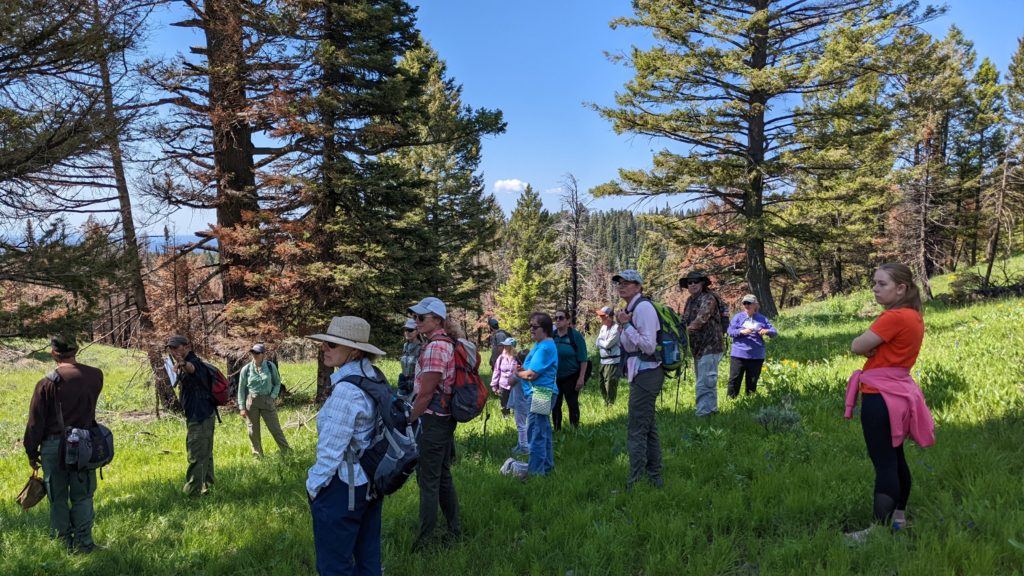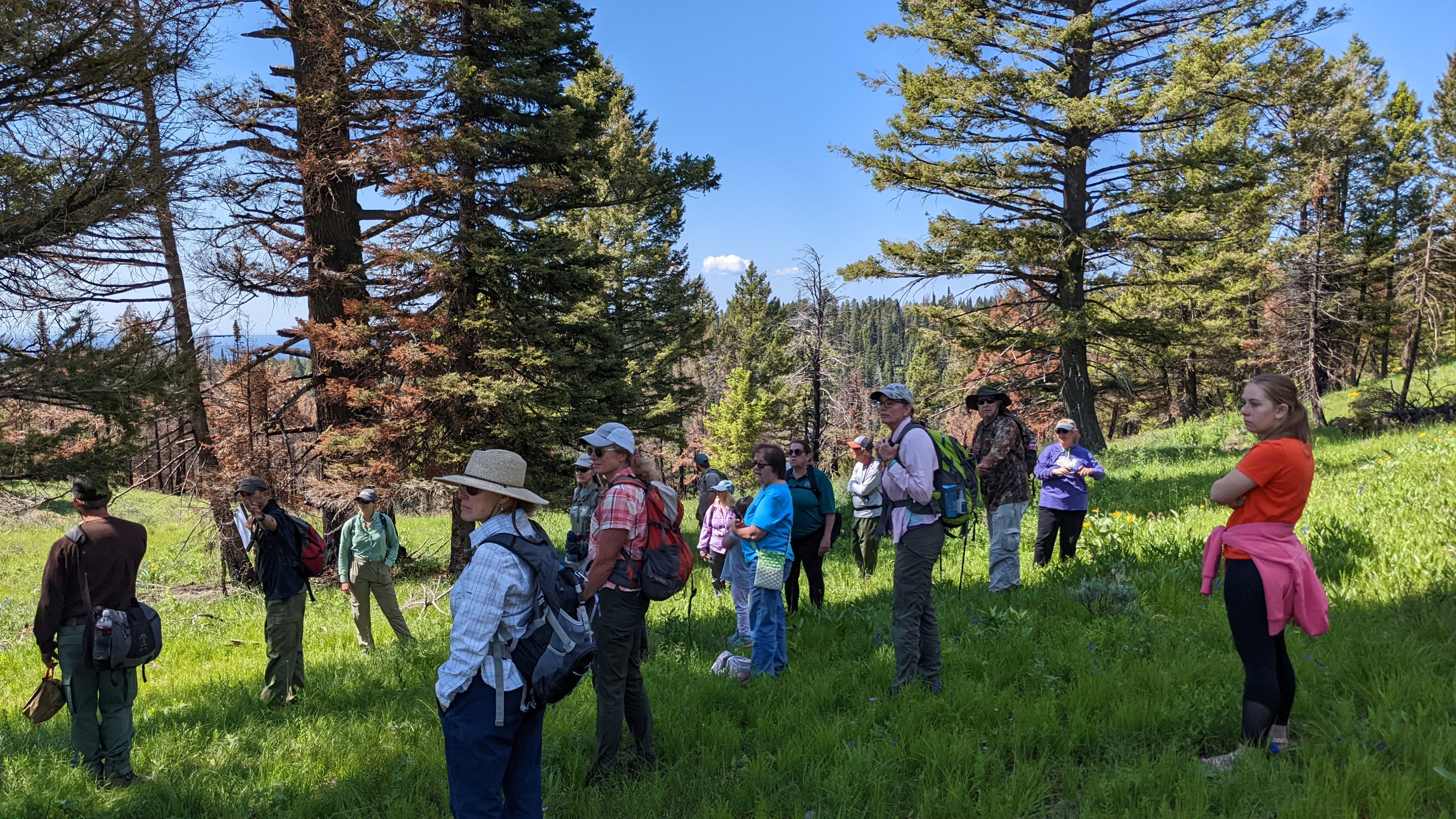
ISLAND PARK COMMUNITY VISITS SAWTELL BURN AREA
Local Volunteer Conservation Group Hosts Fire Ecology Field Trip
ISLAND PARK, Idaho – On Saturday, July 8th, Henrys Fork Wildlife Alliance (HFWA) members and guests were guided by United States Forest Service (USFS) fuel specialists Jonathan White and Breck Kline to learn how fires affect our forests. After a short hike down the mountain, the group arrived at the Sawtelle Peak burn site to learn about how the forest recovers after a wildfire and the benefits fire brings to the forest.
Kline was the incident commander at the scene of the Sawtelle fire and assisted White in describing what it was like arriving at the scene and coordinating efforts with local agencies to suppress the growing blaze. As a part of the field trip, community members saw firsthand the tree that was struck by lightning, initially starting the fire.
White was one of several responsible for the decision to put out the fire before it could threaten infrastructure and visitors to Island Park. White stated “We like to let natural fires take their course but because of the values at risk we decided to put the fire out. Many factors go into making these decisions, but they never are made lightly.” Kline explained the complex coordination that was required between firefighters on the ground as well as in the sky to suppress the fire and make sure that all firefighters remained safe in the process.
Today, forest managers understand that fires are natural and necessary for a healthy ecosystem, an about-face from Smokey Bear’s message a half century ago that all fires were to be prevented. However, allowing a place for fire is complicated by unnatural forest systems following a century of fire suppression policies, increased residential growth within forested land, and more frequent human-caused fires. As many as 80% of forest fires are human-caused. USFS continues to employ several tools to minimize the risk of large-scale fires. These include timber harvest and prescribed burns. White explained that prescribed burns are planned very carefully during fall and spring seasons to help return balance to the forest as well as decrease the risk of future uncontrollable burns. He explained that 98% of prescribed burns are successful.
At the Sawtelle fire location, the rejuvenation of the forest was already apparent. Many mature trees still stood and where once blackened ash was lush with green grass, flowers, and signs of elk-use. “I like doing these events so we can explain the benefits fire brings to healthy forests because so many people don’t understand that”, White stated.
Caitlyn Wanner, Project Coordinate for HFWA, said “We had a beautiful day and learned so much. Reading about fires in the news is always scary, so it’s important that people see first-hand the positive side of fire, and how important it is for our forests. I’m really glad we got to provide that opportunity today.”



